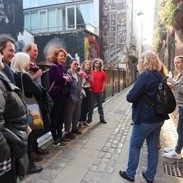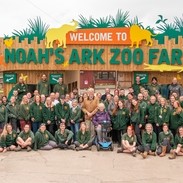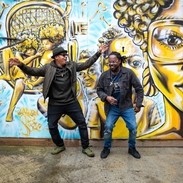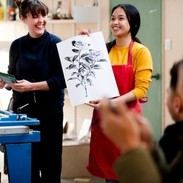An introduction to this accessible and inclusive tourism toolkit
VisitBritain/SolStock/Getty Images

How can this toolkit help me?
Aimed at micro, small and medium-sized tourism businesses wanting to embark on, or continue, their accessibility journey and reach the £14.6bn accessible tourism market.
It provides ‘quick win’ practical hints and tips, as well as longer term aspirational goals, relating to physical and digital design, and business operations.
Allowing readers to dip in and out, each section of the toolkit focuses on a different topic and provides three summary ‘top tips’.
Welcome
Thank you for wanting to improve the accessible and inclusive experiences you are offering to your customers and colleagues.
The toolkit focuses on the physical, digital and operational measures you can take to support those who identify as disabled or having accessibility requirements (these terms are used interchangeably throughout this document).
The tourism sector is responsible for more than 10% of jobs worldwide. With approximately 1.4 billion people travelling the world and 15% of those identifying as disabled or having an accessibility requirement the importance of removing barriers to make tourism more accessible to all is continuing to gain traction. In short, it’s a social responsibility that also makes great business sense.
Making tourism accessible doesn’t need to be difficult. It is about providing a warm welcome for customers, delivering a great service and offering amazing and memorable experiences for everyone. These are all elements which businesses in the tourism sector are already familiar with: the key, if we are to genuinely welcome everyone, means we just need to think a little differently about these.
This toolkit is mainly aimed at micro, small and medium-sized businesses who may have limited time, resources and budget to make infrastructure changes to their premises.
As part of this toolkit, there are downloadable business-specific actionable checklists for you to use to plan and prioritise improvements, as well as some more aspirational technical design guidance for when built environment amendments or installations are possible.
How to use this toolkit
This toolkit provides information and inspiration relating to accessible tourism. It allows you to learn the theory and get excited about the practice of inclusive operations, whether externally for customers or internally for colleagues.
As time and resources can be short and the ‘fear factor’ surrounding disability and accessibility can be high, each section of this toolkit relates to a different subject. These sections enable you to dip in and out of the content as much or as little as you please. Additionally, the ‘top tips’ structure at the start of each section promotes high level understanding with more detailed information available within the section itself.
There will be opportunities throughout this toolkit for you to:
- Learn something new with ‘Did you know?’ pointers;
- Assess your current accessibility offerings with ‘A Moment for Reflection’ activities;
- Take practical and positive actions to improve your inclusivity via downloadable checklists.
A note on language use
Throughout this toolkit we have used the terms ‘disabled people’ and ‘disabled customers’ to refer to people who identify themselves as D/deaf, disabled or neurodiverse. We also use the term ‘people with accessibility requirements’ as a broad term to refer to anyone who would benefit from accessibility provisions, regardless of whether they relate to being disabled or not.
Contributors and supporters
With thanks to the following organisations and individuals, including charities and trade associations, who kindly shared their time and expertise and/or are supporters of this toolkit:
- AccessAble;
- Access and Inclusion UK;
- Association of Event Organisers;
- Bacta;
- BALPPA;
- Barclays;
- BIAZA;
- British Institute of Innkeeping;
- Business Disability Forum;
- Caravan and Motorhome Club;
- Centre for Accessible Environments;
- Dementia Adventure;
- English Heritage;
- Euan’s Guide;
- Events Industry Alliance;
- Historic Houses;
- Historic Royal Palaces;
- Inclusive Hotels Network;
- Institute of Tourist Guiding;
- Lead Assessor for the National Accessible Scheme, VisitEngland Assessment Services;
- Leonard Cheshire;
- Meetings Industry Association;
- Merlin Entertainments;
- Mencap;
- Motionspot;
- Muscular Dystrophy UK;
- National Autistic Society;
- Premier Cottages;
- RNIB;
- Sense;
- Social enterprise, Sargent Group Consulting;
- Stay in a Pub;
- The Professional Association of Self-Caterers UK;
- UKHospitality;
- UK Theatre and Society of London Theatre;
- VisitsUnlimited.
About the author
VisitEngland would like to thank inclusive design agency Mima and their Head of Accessibility and Inclusive Design, Emily Yates, for producing this toolkit.
Emily is an accessibility consultant and broadcaster, regularly advising and commenting on disability issues. As a wheelchair user herself, Emily also promotes and celebrates engagement with lived experience and expertise on appropriate projects, and regularly creates and facilitates user groups with members who have physical, sensory and cognitive impairments.







